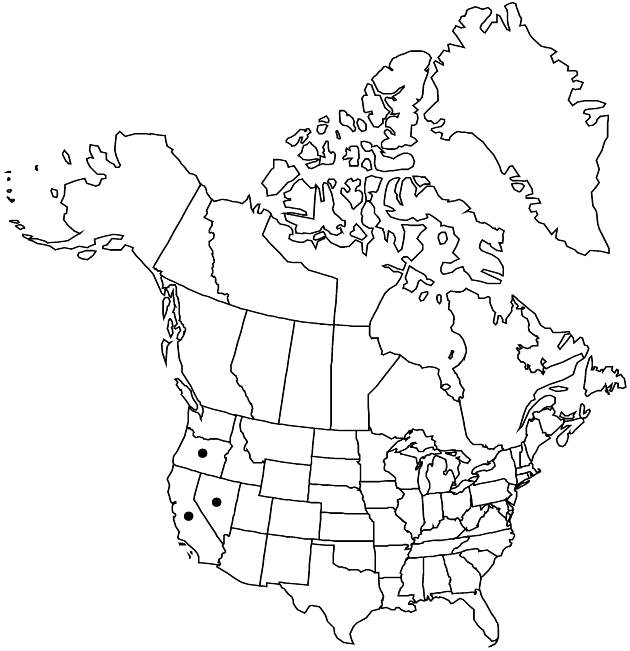Difference between revisions of "Cirsium occidentale"
Fl. W. Calif., 509. 1901.
FNA>Volume Importer |
RevisionBot (talk | contribs) m (Bot: Adding category Revised Since Print) |
||
| (4 intermediate revisions by 3 users not shown) | |||
| Line 8: | Line 8: | ||
}} | }} | ||
|common_names=Western thistle | |common_names=Western thistle | ||
| + | |special_status={{Treatment/ID/Special_status | ||
| + | |code=F | ||
| + | |label=Illustrated | ||
| + | }}{{Treatment/ID/Special_status | ||
| + | |code=E | ||
| + | |label=Endemic | ||
| + | }} | ||
|basionyms={{Treatment/ID/Basionym | |basionyms={{Treatment/ID/Basionym | ||
|name=Carduus occidentalis | |name=Carduus occidentalis | ||
| Line 26: | Line 33: | ||
-->{{Treatment/Body | -->{{Treatment/Body | ||
| − | |distribution= | + | |distribution=Calif.;Nev.;Oreg. |
|discussion=<p>Varieties 7 (7 in the flora).</p> | |discussion=<p>Varieties 7 (7 in the flora).</p> | ||
|tables= | |tables= | ||
| Line 96: | Line 103: | ||
|basionyms=Carduus occidentalis | |basionyms=Carduus occidentalis | ||
|family=Asteraceae | |family=Asteraceae | ||
| − | |distribution= | + | |distribution=Calif.;Nev.;Oreg. |
|reference=None | |reference=None | ||
|publication title=Fl. W. Calif., | |publication title=Fl. W. Calif., | ||
|publication year=1901 | |publication year=1901 | ||
| − | |special status= | + | |special status=Illustrated;Endemic |
| − | |source xml=https:// | + | |source xml=https://bitbucket.org/aafc-mbb/fna-data-curation/src/2e0870ddd59836b60bcf96646a41e87ea5a5943a/coarse_grained_fna_xml/V19-20-21/V19_114.xml |
|tribe=Asteraceae tribe Cardueae | |tribe=Asteraceae tribe Cardueae | ||
|genus=Cirsium | |genus=Cirsium | ||
| Line 107: | Line 114: | ||
}}<!-- | }}<!-- | ||
| − | -->[[Category:Treatment]][[Category:Cirsium]] | + | --> |
| + | |||
| + | [[Category:Treatment]] | ||
| + | [[Category:Cirsium]] | ||
| + | [[Category:Revised Since Print]] | ||
Latest revision as of 18:23, 6 November 2020
Biennials, 5–400 cm; taproots. Stems usually 1, thinly to densely gray- or white-tomentose, sometimes ± glabrate; branches few–many, usually from above mid or near base in compact, moundlike dwarf plants, ascending to spreading. Leaves: blades oblong–elliptic to oblanceolate, 6–40 × 1.5–10+ cm, shallowly to deeply pinnatifid, lobes usually rigidly spreading, undivided or with 1–2 pairs of coarse teeth or lobes, main spines 5–15 mm, both faces gray- to white-tomentose, sometimes ± glabrate or adaxial faces green, thinly arachnoid-tomentose; basal sometimes present at flowering, petiolate or sessile and bases tapered, spiny-winged; principal cauline much reduced distally, sessile, bases decurrent or not, as spiny wings; distal much reduced, linear, ± bractlike. Heads 1–many in loose to tight clusters (barely raised above rosette in dwarf plants). Peduncles 1–30 cm. Involucres ovoid to spheric, 1.5–5 × 1.5–8 cm, arachnoid to ± loosely tomentose, often adjacent phyllaries connected by conspicuous arachnoid trichomes, sometimes glabrous or glabrate. Phyllaries in 7–10 series, subequal to strongly imbricate, green or stramineous to purple-tinged, linear to narrowly lanceolate, abaxial faces without glutinous ridge; outer and mid bodies appressed, entire, apices deflexed to spreading or ascending, short-triangular to elongate, linear-acicular, spines spreading to reflexed, 1–10+ mm; apices of inner erect, often flexuous, flat. Corollas white to lavender, pink, rose-purple, or red, 18–40 mm, tubes 8–18 mm, throats 5–7 mm, lobes 5–10 mm; style tips 4–5 mm. Cypselae ± brown, 5–6 mm, apical collars not differentiated; pappi 15–30 mm.
Distribution

Calif., Nev., Oreg.
Discussion
Varieties 7 (7 in the flora).
Selected References
None.
Lower Taxa
Key
| 1 | Plants compact, rounded, moundlike; heads usually not much elevated above leaves | Cirsium occidentale var. compactum |
| 1 | Plants usually erect; principal heads usually conspicuously pedunculate | > 2 |
| 2 | Corollas white to light purple or rose | Cirsium occidentale var. californicum |
| 2 | Corollas deep purple to bright pink or red | > 3 |
| 3 | Plants densely white-tomentose; phyllaries persistently white-tomentose (except spines); outer phyllaries usually very long, spreading to reflexed | Cirsium occidentale var. candidissimum |
| 3 | Plants variably tomentose, sometimes ± glabrate; phyllaries ± arachnoid to floccose-tomentose, sometimes green and glabrate; outer phyllaries short to long, ascending to spreading or reflexed | > 4 |
| 4 | Involucres usually about as long as wide or wider than long; phyllaries densely and persistently arachnoid with fine trichomes connecting tips of adjacent phyllaries | > 5 |
| 4 | Involucres usually longer than wide; phyllaries tomentose or glabrate, sparingly or not arachnoid with fine trichomes connecting tips of adjacent phyllaries | > 6 |
| 5 | Phyllary apices ± imbricate, the proximal usually shorter than medial and distal, lanceolate to linear-acicular, 0.5–15 mm; co- rollas bright purple | Cirsium occidentale var. occidentale |
| 5 | Phyllary apices subequal, all long- acicular, 1.5–3 cm; corollas light to deep reddish purple | Cirsium occidentale var. coulteri |
| 6 | Corollas 20–24 mm, deep reddish purple; s Santa Lucia Mountains of San Luis Obispo County, California | Cirsium occidentale var. lucianum |
| 6 | Corollas 23–35 mm, bright pink to red; widespread | Cirsium occidentale var. venustum |